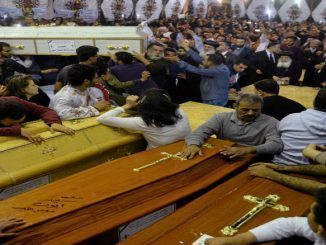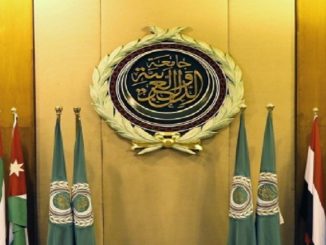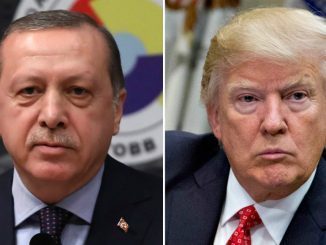Recapturing Syria’s ancient city of palmyra from Islamic state group proved one more time the role the Russia plays in supporting Assad regime, which it saved from being overthrown by his opposers. This battle may be the first in a new military campaign as the group has been cornered in Syria and first signs of an alliance between Assad regime and Kurdish militias have been shown.
ISIS first captured Palmyra, once a Silk Road oasis that boasted some of the best-preserved ruins of antiquity, in May 2015.
Assad regime backed Russian forces reclaimed the city from Isis in March, only to lose it to a counter-offensive in December.
Regime forces launched last month a new offensive to recapture the city with the support of Russian air force.
Russian-backed Syrian troops pushed into a western neighborhood of the city late on Wednesday after fierce clashes with the ISIS fighters.
By Thursday morning, ISIS militants had withdrawn to residential neighborhoods in the east of the city, the UK-based Syrian Observatory for Human Rights said.
“IS withdrew from most of Palmyra after laying mines across the city. There are still suicide bombers left in the eastern neighborhoods,” Syrian Observatory head Rami Abdel Rahman told AFP news agency.
“Government forces have not yet been able to enter the heart of the city or the eastern parts.”
Talal Barazi, the governor of the Homs province, said that ISIS militants have been pushed towards Dier Ezzor, one of their remaining strongholds in Syria.
“The terrorists were pushed back from the city for more than 20 kilometers in the direction of As Sukhnah [a city located between Palmyra and Deir ez-Zor]. I believe, with the support of allies, the army will keep on the offensive toward As Sukhnah,” Barazi said.
It is expected that the regime forces keep chasing ISIS militants towards Dier Ezzor, where the Kurdish militias have already started an offensive to put ISIS under siege and cut their way to Raqqa.
As the regime forces reached Manbij city near Aleppo and made a sort of alliance with the Kurdish militias there to hinder Turkish military operations, another alliance might be formed near Dier Ezzor to help in ending or at least besieging the group there and cut its way to its stronghold in Raqqa.
Victory achieved by the Russians
This success in Palmyra wouldn’t have been possible without the Russian help, which has, since it intervened in the Syrian crisis, changed the tide of war in Assad regime’s favor.
Bashar al-Jaafari, the head of the regime’s delegation to Syria talks in Geneva, said that the Russian support was essential in retrieving the city.
“The Russian allies are fighting with us hand in hand against the terrorist groups of ISIS. The residents of Palmyra will come back to it when it is cleared of mines and explosives,” Jaafari told reporters.
Lt. Gen. Sergei Rudskoi, the chief of the Russian General Staff, underlined the same point too.
“Russian aviation and Special Operations Forces were instrumental in battering ISIS in the Palmyra area,” he said.
“The results achieved were made possible thanks to the combined effective planning and timely concentrated efforts between the command of the Russian group in Syria and the Syrian armed forces,” he added.
A Russian diplomat went further to say that the battle of Palmyra resembles a victory for the war on terror.”
“The liberation of Palmyra is a powerful symbol, of the liberation of Syria from the terror plague and its return to the normal life and return of the preserved treasures of Palmyra to humanity,” Konstantin Kosachev, the diplomat, told reporters.
“Palmyra has become the symbol of Syria’s tragedy and it was not accidental that the militants tried to keep control over the city,” Kosachev added.
However, this “victory” wasn’t achieved without losses or the Russians.
Russian Maj. Gen. Pyotr Milyukhin has been placed in the resuscitation department of the Main Military Clinical Hospital in Moscow. The officer was wounded a week ago during the Palmyra operations.
The hospital refused to disclose any details but specified that the officer is being treated “in the 56th department”. However, som sources leaked that he was injured by a landmine and lost his legs in addition other to life-threatening injuries.
Less damage than expected, repairment to start soon
Before ISIS entered the city in May 2015, the city boasted temples, colonnaded alleys, and elaborately decorated tombs that were among the best preserved classical monuments in the Middle East.
But the armed group launched a campaign of destruction of the city’s most famous monuments.
During its previous spell in control of Palmyra, Islamic State destroyed other monuments there, including its 1,800-year-old monumental arch.
Syrian archaeologists had transferred many artifacts including about 400 statues to Damascus to prevent further destruction if Isis returned, but many reliefs and buildings remained at the site and were vulnerable to destruction.
in 2015, ISIS blew up the ancient temple of Baal Shamin. Baal Shamin was built in 17AD and it was expanded under the reign of Roman emperor Hadrian in 130AD.
Isis mined the ancient site in June before destroying the lion statue, a unique piece made of limestone that stood more than three meters high (10 feet) that stood outside a museum. Funerary busts were also destroyed.
The temple of Bel in Palmyra was also destroyed by ISIS in 2015. the Temple of Bel as Palmyra’s most important site and the most important temple in the Middle East alongside Baalbek in Lebanon.
ISIS militants publicly beheaded in 2015 the city’s 81-year-old head of antiquities, Khaled al-Assad, after he helped remove artifacts from the museum and refused to reveal the location of hidden treasures from the Unesco World Heritage Site.
During the new attack on the city, satellite imagery has shown that ISIS has demolished more monuments since it recaptured Palmyra from government forces in December.
Reports said that the militants have destroyed a tetrapylon and part of a Roman theater in the ancient city of Palmyra.
Maamoun Abdulkarim, Syria’s antiquities chief, said in January that ISIS destroyed the tetrapylon – a 16-columned structure that marked one end of the ancient city’s colonnade, and part of the facade of the Roman theater.
“we received satellite photographs from our colleagues at Boston University showing damage to the facade of the Roman amphitheater,” he told AFP news agency.
“This is a horror film and we will see more of it, as long as the city is under their control it will remain a hostage,” said Abdulkarim.
However, after retrieving the city two days ago Abdulkarim said that the new damage may be less than earlier believed.
Abdulkarim said that preliminary photographs and video from the city have shown less damage than archaeologists feared.
“Really, our hearts had been overwhelmed with fear of a complete explosion of the theater,” Abdulkarim said.
“We thought the situation would be much worse, that there would be eradication, that they [Islamic State] would complete their crimes from the first occupation,” he added.
Abdulkarim said he would visit the area soon for a better assessment, but added: “At least there is some sense of tranquility after we received the initial photos. The general situation is reassuring.”
Some of the damage could be repaired, he said. “Except for the previous destruction, the state of the theater looks good,” Abdulkarim said. “Even that destroyed section could be repaired. It had already been restored, and it will be again.”
“We had received terrifying information that there might have been a revenge crime against the entire citadel,” Abdulkarim said. “There is some damage, but in general, the citadel is fine too.”
Homs Governor Talal Barazi said the reconstruction of infrastructure in Palmyra, including water supply and communications, will start soon and will take from two weeks to several months.
“The reconstruction will last for several weeks. The communications will be restored in 10 days, water supply – in two weeks, rebuilding electricity will be most time-consuming. Restoration of serious damages inflicted to the electricity network will take several months,” Barazi said, specifying that the works on restoring infrastructure will start on Saturday.
The Syrian crisis began as a peaceful demonstration against the injustice in Syria. Assad regime used to fire power and violence against the civilians and led to armed resistance. 450.000 Syrians lost their lives in the past five years according to UN estimates, and more than 12 million have lost their homes.




